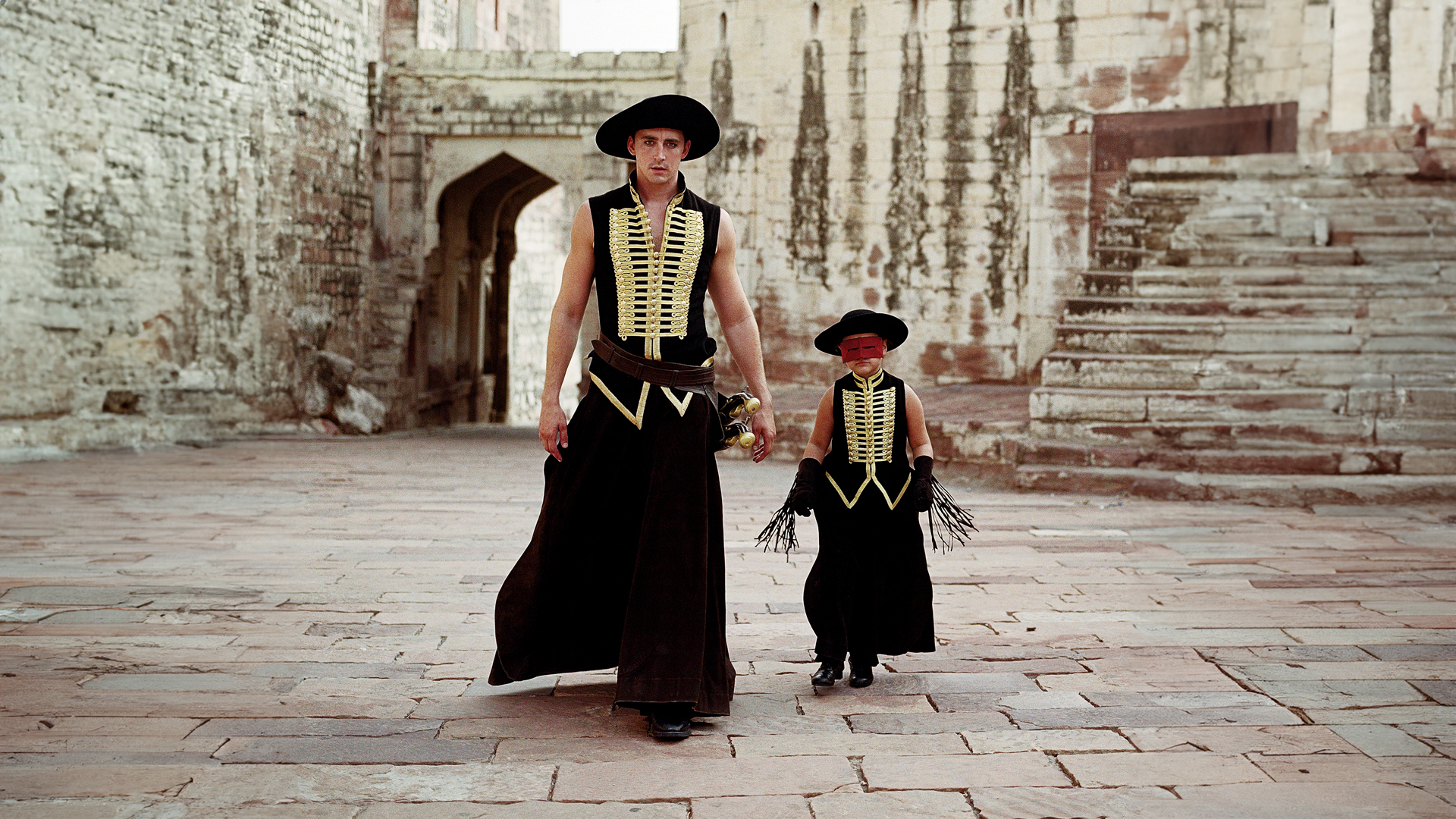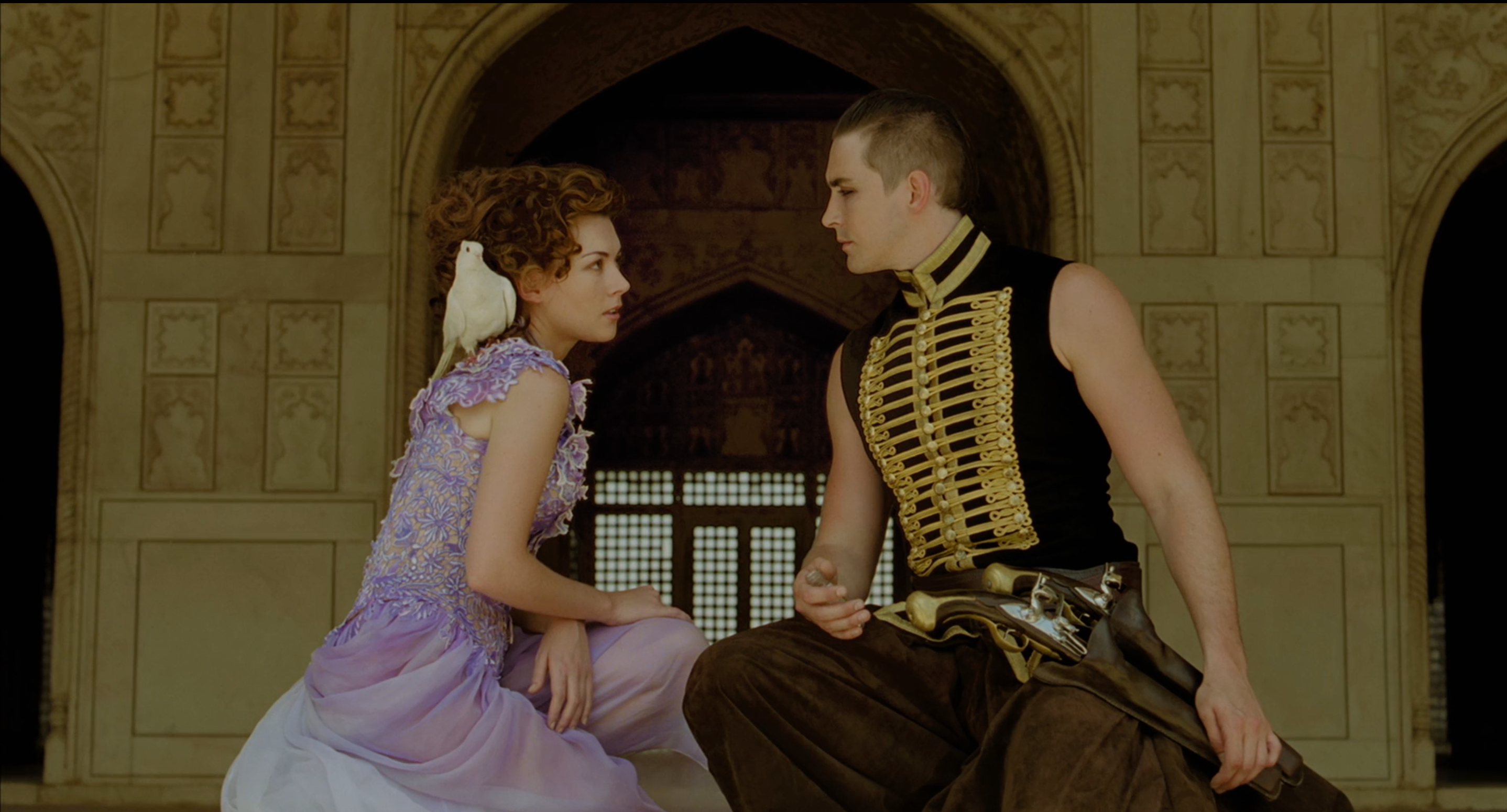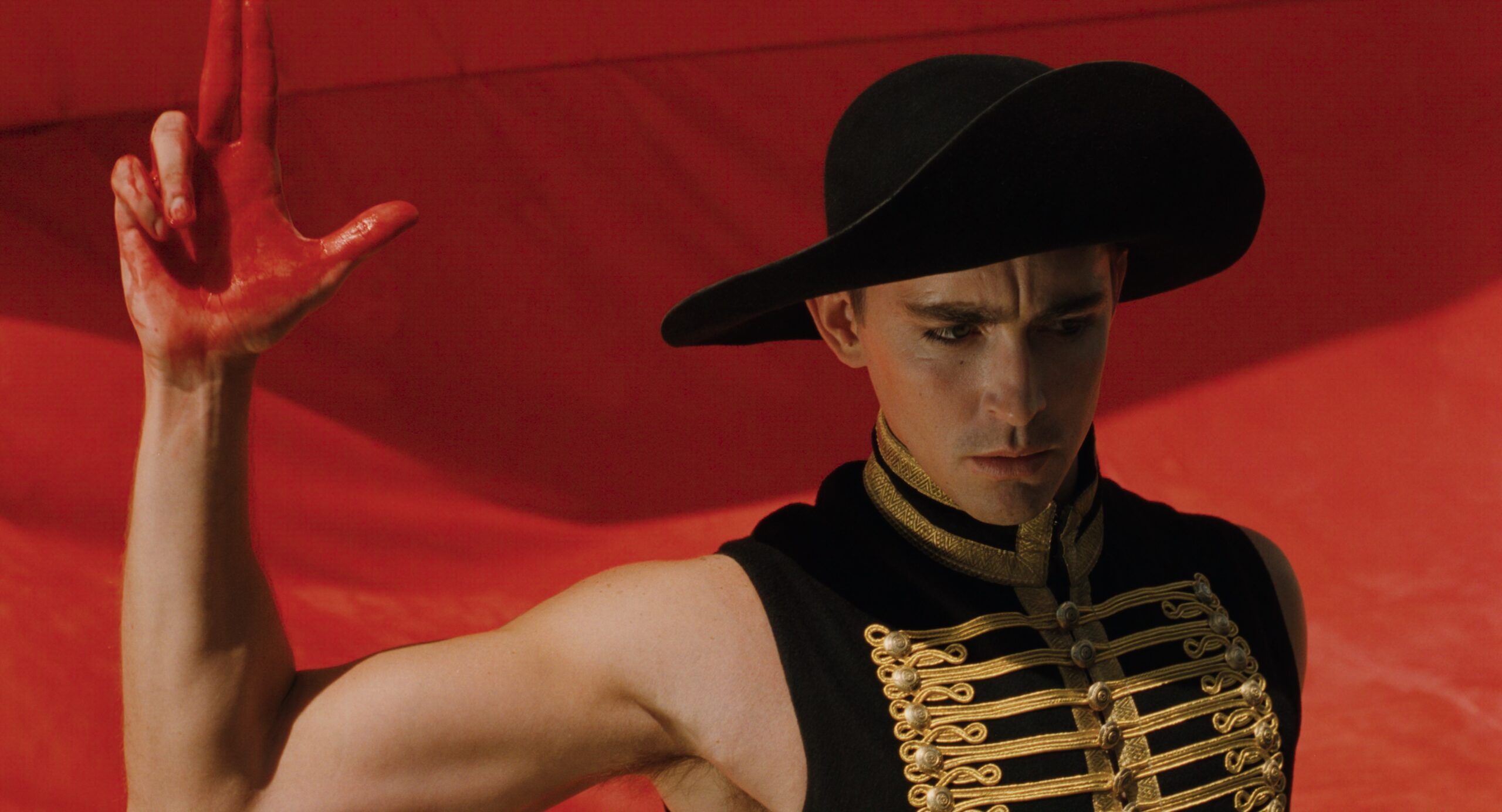“The Fall,” now finally available on Mubi and getting a theatrical release from the company, feels impossible. It’s one of those films that’s richly steeped in the history of cinema while also expressing itself through a unique, special voice.
Of course, no one got it.
The story goes that, fifteen minutes into its TIFF launch, Harvey Weinstein walked out of the premiere, setting the tone of the moviegoing public’s response. It barely got released a couple of years later, but the people who saw this film adored it, especially Roger Ebert, Tarsem’s most vocal advocate. He would be overjoyed to see how people are finding the movie almost two decades later. And he’d love the career of Lee Pace.
The future star of “Guardians of the Galaxy” and “Halt and Catch Fire” made his feature debut in “The Fall,” playing the dual roles of an injured, depressed stuntman and the heroic lead in the story he tells to a young girl (played unforgettably by Catinca Amaru). The young actress barely spoke English when the production started and it’s her natural, loving chemistry with Pace that gives the film its emotional foundation.
We caught up with Pace this month to discuss his vivid memories of the film’s production, Roger’s support of the film, how we can get more movies like it, and even a bit about his excellent TV work.
Roger was a huge fan of the film and Tarsem’s work in general. What did that mean to you guys?
We thought the movie was very special. We were very proud of it. Making the movie was a profound experience that we all shared. So we thought that the movie would premiere and everyone would see what we saw in the film. There’s an industry around movies that’s not completely different than the art, but you know what I mean. It was a very complicated time for the film, and, for all of us, kind of confusing and painful. So to have someone we respect so much understand the film and what we were trying to do and appreciate it means the world to us. I think it was instrumental in the unique life the film has had, where people have found it and recommended it, and here we are 20 years later, and a movie that has been difficult to find has all this love for it. We’ve earned the audience. It was cinephiles being like, “This expression means something to me. We love movies, and this director made a film that touches me.” It’s really interesting.
It’s a strong audience film that I feel never really got the chance to play with an audience. It’s about the power of storytelling to a degree, which is always something Roger responded to: the value of art and story.
Well, I think that’s what Tarsem set out to do. Tarsem is a man who loves cinema. I’ll go to visit him, and we’ll spend three days together and watch films. He will show me “A Separation,” for example, and we’ll talk about it for two hours. We’ll talk about what happened technically in the film and why it resonates with him. I’ve gotten this real education from him. Cinema is an important thing to him. Here he is financing his own film and making something extremely important to him: Of course, it’s going to be about cinema. And it will feature the imagination of a child who has never seen a movie. So he can approach her imagination in a pre-cinematic way and let go of many of the conventions that cinema has acquired over the years. Or at least relax them. The tools are the tools, but he understands that camera so well, what it’s capable of, music, and how all the layers combine to make cinema. When I thought about him constructing the fantasy with that in mind, I thought about how even in my dreams, I feel like I dream in coverage or crane shots—we’re so “referenced” now. And Tarsem watches films, but his work isn’t referenced. He is an individual. He is singular.

How does it play differently now than it did 18 years ago?
We’ll see. I haven’t seen it in a very long time, but I’m going to watch it with Tarsem tonight in this audience. I haven’t seen the 4K. I probably haven’t seen it since Toronto [in 2006], and I’m not sure I watched it with an audience then. I just kind of watched it in preparation for the press. I haven’t seen it in such a long time! I love the trailer that Mubi put together. I’m struck by how young I was in it. I was like a child. And I have so many memories of this rich, formative experience I had shooting it. It’s interesting to reflect on that time.
What’s the key memory that stands out for you on the production?
I remember we were shooting in Jodhpur. We were shooting the final act stuff when Odious is killing off the bandits. It was so hot. It was like 110 degrees. It was madness. Everything about it from the original pitch. It was madness. We were sitting in the shade, resting between shots, and he looked at me with such satisfaction because he was surrounded by his closest friends, doing what he loved.
He appreciated it. He was savoring it. We had become so close at that point. He said, “It’s never like this. You get one of these in your life.” I was too inexperienced to fully appreciate what he was saying. But now, after working for 20 years in lots of different settings with lots of different directors and budgets, I can appreciate what he was saying, and he was right. I’ve never had an experience like that since.
Because of lacking passion in subsequent filmmakers? It seems like a unique experience in so many ways.
Exactly that. It’s not that other things are lacking; they’re just different. Some of them have been equally extraordinary in completely different ways. Some of them … you know, it’s not a humane business (laughs). Some of them, as much as I came out of “The Fall” inspired, some of them you crawl out covered in scars and thinking, I’m never doing that again. This one: I doubled in size. I gained so much. It took me to a place I didn’t even know existed. When I was a 16-year-old in Houston, Texas, driving downtown to watch the arthouse movies, I remember watching it and being like, “I want to do that.” It brought me there. It was like that.

Let’s talk physicality. For at least half of the film, you’re locked in and can’t use one of the tools as an actor with your body. You’re stuck in a bed, often surrounded by a curtain. Can you speak on the challenges that presents?
It was interesting. I would say that rather than challenging. It was hard. I was so young. I was game for whatever Tarsem wanted to do. He pitched it in the original meeting, and I thought it was great. It’s nuts, but yeah, OK. I gave it everything I had. That’s one detail in an atmosphere that he created whereby not just Catinca and I could relax and live in the fiction of it. We shot very slowly; we did one scene a day and shot in order. Catinca was the one who brought us with her. She didn’t speak English in the first scene that we did. She had learned her lines phonetically with her mother. We met for the first time on camera. He delayed our meeting till she got her props just right and then she came in for a real encounter.
By the end of that South African shoot and she’s in the bed with the bandage on her head, not only was she speaking English fluently, but she understood what it meant to be an actress. And she was a little bored with it, to be honest. She was a little like, “the head thing, this cast…” I would do these long takes where I told the story, and she was uncomfortable. And I said, “Catinca, we’re actors. What we’re doing is a kind of play, but it’s work. Alexandria is your responsibility, and you need to live as Alexandria for this little bit of time. What do you think Roy is feeling right now?” She’d answer, and I’d say, “What would you like to do to make him feel differently?” And she’d answer the question. We had this little talk. She was completely engaged.
She’s an intellect that you just don’t come across in children. She’s unfiltered and ready for that conversation. We did the take, and she was wonderful. And I looked at her, and I said, “You did it. Good job.” The pride in her face: she knew what she had done. She knew it. She brought us all with her. There were times when we were in that curtain with two holes cut out, and they would change the mags of film, and we would just improvise. I would tell part of the story. We would do a tangent. Come back. Get her to say her lines. Come back to something else. And she would forget. She would say something inadvertently funny, and everyone would laugh in the next room and she would look at me and say, “What are they laughing at? What’s so funny?”
What a gift to not just have that talent, but the time to develop her.
It’s all in that experience of being with someone. That’s one thing that I would say over the years: You learn tricks and ways of speaking that believably imitate realism and those experiences where you are able to believe the fiction and relax into it are so rare. “We got two takes, and we got to move on.” Tarsem valued those performances. He valued the nuance and the reality of those performances. And he invested in it. That was his money. All of those minutes, he paid for. He said, “I want to see these humans speak to each other.”
Do you remember what works you looked at in production? Either film or other forms? Other than specifically what it adapts?
I never watched “Yo Ho Ho” [the film from which “The Fall” is loosely adapted]. I was interested in silent movies and learning about the gags. That was what those early reels were: people doing stunts. And there were these flimsy stories written around like someone being tied to a train track. Or, like here, someone coming to Hollywood thinking he’s going to be an actor and rides a horse off a bridge. A lot of people got very hurt. I found that very interesting—the Wild West of Hollywood. Anything seems possible. One thing that comes to mind is that this was my introduction to Eiko Ishioka—he showed me Paul Schrader’s “Mishima.” She not only did the costumes but also art directed the movie.
Another movie Roger adored.
That’s still one of my favorite movies. It set the stage going into it where I felt completely in his hands. I trusted him completely. Even though I was so new, I was like, “This is what I want to do.” This is nuts. I can try stuff. When we got to the fantasy stuff, it was wild.

This might be too big of a question on a Tuesday, but how do we encourage more Tarsems to make movies like this at a time when financial consideration is king?
Well, the movies are so expensive now.
Yet you can also make one with your phone. But we’re still not getting more movies like “The Fall.”
Well, “Megalopolis.” He did it.
He had to use his own money.
I’m excited to see it but haven’t seen it yet. But I would say that the social media I’m aware of and don’t consume much because so much is obnoxious, but I feel like what I’m aware of is people negging on the movie. “It’s not this. It’s not that.” He did it. He did it. He did the impossible thing. He put his money where his mouth is. It’s the odd person who will take that risk with their own money. You spend money on what you care about and believe in.
Tarsem did that. The movie is uncompromisingly his, which is extraordinary. I also feel like, with streaming, everyone is so well-referenced. People have watched so many movies that other director’s vocabularies have technically seeped into them. There are so many layers. So, to cut through it with an original idea … it’s so influenced by so many things. Here we are in 2024, and not only have been so many movies that have been made that are brilliant but so many perspectives that are all available to us. So we can watch a little bit of “Chinatown” and then skip to something else. We digest it all in a way that does affect the art. And some people digest it better than others.
“Pushing Daisies” and “Halt and Catch Fire” are two of my favorite shows of the last 20 years, and I’m not alone in that opinion. What’s it like to be part of two shows with such vocal, strong fan bases? What do they mean to you?
Working with Bryan Fuller [on “Daisies”], who I also consider, like Tarsem, a friend and mentor—what an incredible time in my life. What a fun character. “Halt and Catch Fire” was a challenge. There’s no reason that show kept getting made. Seven people were watching it. People found it. AMC believed in it. Melissa Bernstein and Mark Johnston figured out how to make it on a budget that made sense to everyone. It was not an expensive show. It really wasn’t. What it was was about these actors and performances. We were a tight group of people who took our work very seriously. Similar to Tarsem’s movie—we were all friends. It was a small group of people. We would have dinner together and talk about the movies we liked.
That was like “Halt and Catch Fire”. We would see each other all weekend long, talk about the scenes that came up, and make observations about each other’s characters. It was so collaborative. It makes it onto the screen. It makes the chemistry intelligent. There was an alchemy. Also, Joe McMillan—talk about this growth I have walked around with. I didn’t set out to make the character like myself, but it just happened. I kind of worked through the challenges of my own life through him. So I deeply appreciate that people have dug through the swamp and found that show.




